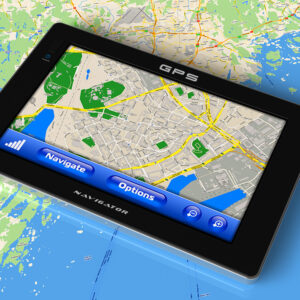Infrastructure is, by its definition, the backbone upon which the United States is built. Infrastructure modernization affects how people, cities and companies function. From fixing potholes and expanding broadband into rural communities to installing EV charging stations and operating a newly resilient electrical grid during severe weather, infrastructure supports every aspect of our daily lives.
The Global Positioning System (GPS) is a vital part of safely developing and maintaining existing infrastructure.
You won’t find GPS mentioned in the Bipartisan Infrastructure Investment and Jobs Act (IIJA). Still, nearly every project funded by this $1.2 trillion law will rely on this essential space-based system to deliver much-needed improvements to infrastructure nationwide.
An Oxford University study estimates that 92 percent of big infrastructure projects worldwide fail to meet cost and schedule estimates. GPS-driven construction systems will help modernize infrastructure faster and introduce cost savings that can benefit taxpayers and society incalculably.
While GPS has applications across different infrastructure projects, digital construction management tools and equipment, surveyors and maps incorporating GPS signals and information are vital to fulfilling IIJA’s promise.
Precision construction techniques are used to build safe, high-quality infrastructure as envisioned by the IIJA. Precision is what GPS, and systems that augment its signals, bring to these projects. GPS-driven equipment can help plan and execute projects requiring measurements determining distance and height with up to centimeters-level accuracy, in turn minimizing errors and rework that can delay project completion and add costs. Railway inspection equipment, bulldozers, excavators and more improve the productivity, safety, accuracy and speed of their operations when equipped with GPS receivers.
With this GPS-derived information, cloud-based digital construction management tools can accelerate the construction process.
Using the data from laser and GPS-enabled surveys and 3-D terrain models, these tools provide real-time data verification and other information about the infrastructure project, improving efficiency and reducing costs.
It’s not just construction equipment. Surveyors are the heart of this infrastructure revolution, and GPS has helped to revolutionize the equipment they use to plan, measure and lay out highways, bridges and other infrastructure projects. Recently, surveyors manually calculated angles and distances between land features. Today, infrastructure surveyors produce maps, reports and legally binding documents incorporating information from GPS, lasers and other high-tech, equipment. These advancements brought on by GPS integration are core to effectively using taxpayer dollars.
The importance of GPS for projects is being demonstrated every day, and the Upper Mississippi River / Illinois Waterway Navigation and Ecosystem and Sustainability Program is a perfect example. The IIJA allocated $829.1 million for this vitally important waterway — which transports more than 60 percent of America’s corn and soybeans to markets worldwide — and GPS-based solutions like marine surveying and waterway navigation ensure these deliveries reach their destinations safely and efficiently.
Maps and other geographic information systems are essential to fulfilling IIJA’s promise.
GPS coordinates flourish when incorporated into maps. A rich, comprehensive understanding of the area is gained when map features are married with precise coordinates. One example of the role of maps and geographic information systems in fulfilling the IIJA is the $7.5 billion electric vehicle charging infrastructure being built nationwide. Charging stations will be identified on maps incorporating GPS-derived information, and GPS will help drivers navigate to their locations. What better way to reduce range anxiety, identified as a critical barrier to EV adoption, than to use GPS to confidently locate nearby stations?
Other IIJA-funded projects benefit from signals transmitted from three specialized clocks carried by the satellite. They deliver precise time to synchronize signals in our electronic and digital systems, minimize transmission interruptions or delays in electrical grids, broadband and other internet services, and more.
At first glance, highways, trains, bridges, surveyors, electric vehicle charging stations, broadband, and construction management tools and equipment might have notions in common with GPS satellites. However, when we look at the benefits of applying GPS to each sector, the connection is clear. These projects, with the help of GPS, will improve the way we live, work and travel.
With $1.2 trillion appropriated for IIJA, politicians and taxpayers want to see real progress in infrastructure projects. GPS in these infrastructure projects is critical to ensuring that money is being used efficiently and projects are completed safely and quickly.


